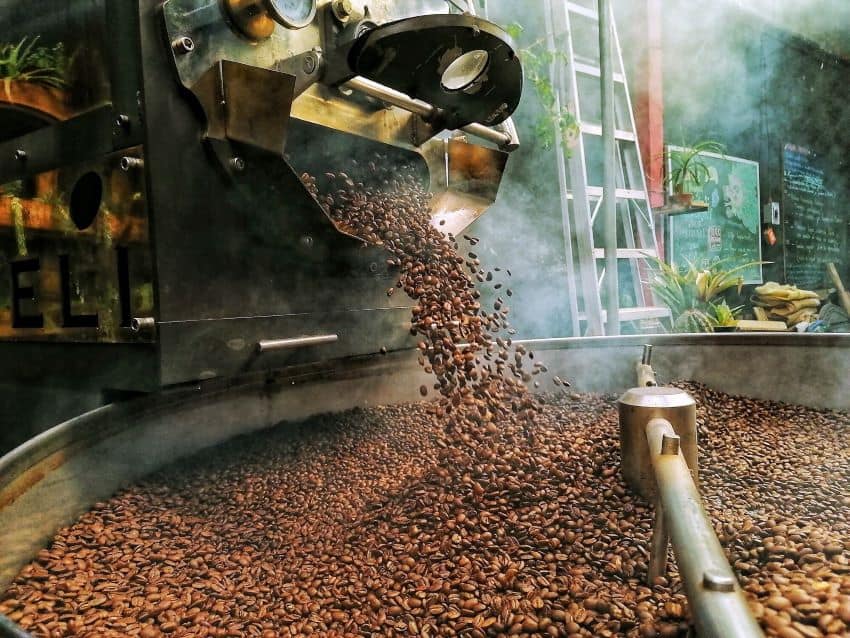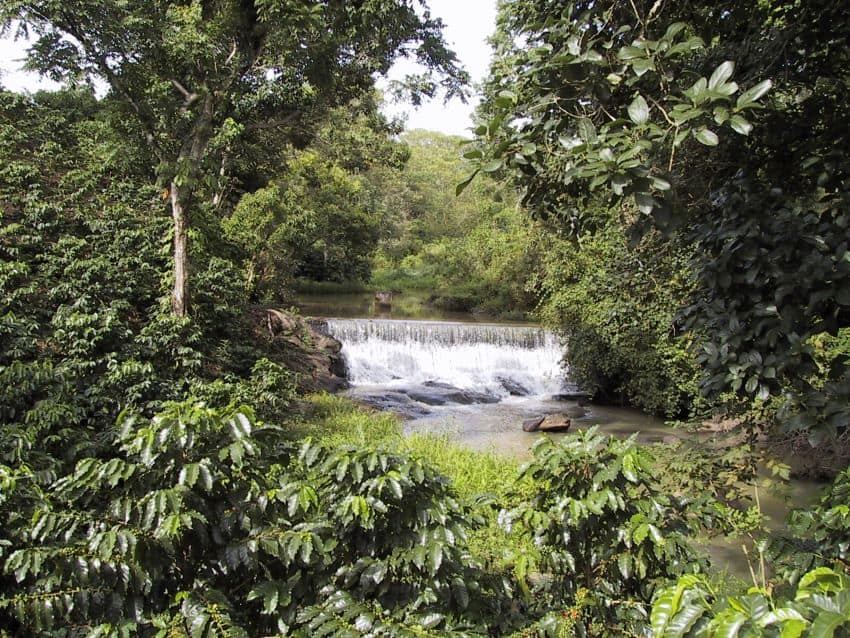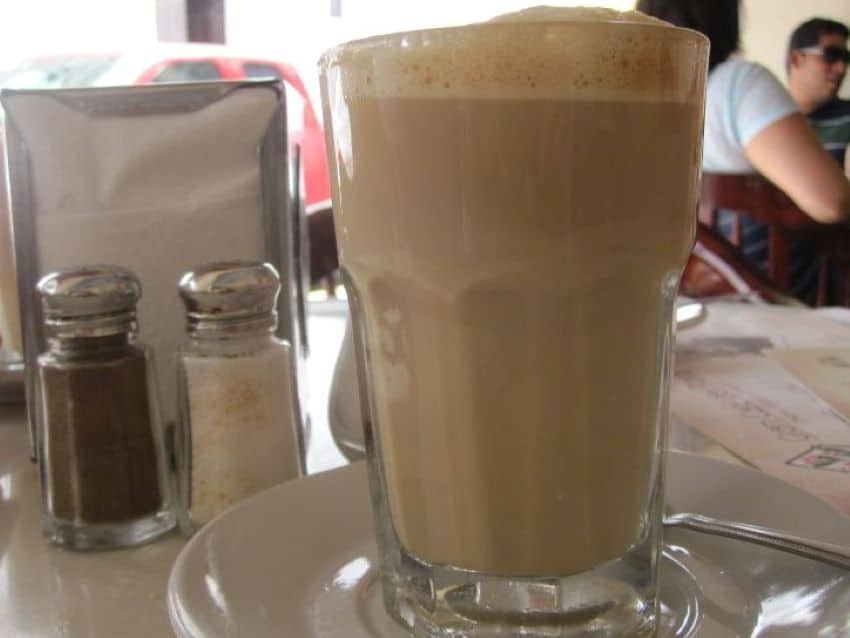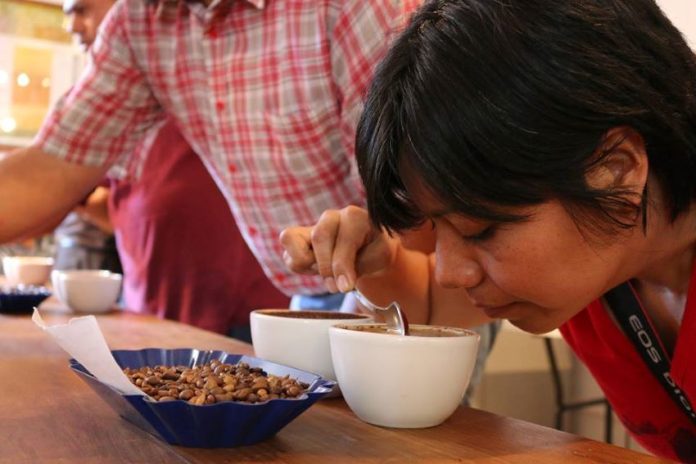Can your morning cup of joe help support hardworking, dedicated Mexican farmers?
An unfortunate truth is that Mexico is not considered a prime producer of coffee, even among Mexicans. Nescafé instant coffee is ubiquitous on supermarket shelves and in restaurants. “Gourmet” coffee is often associated with Starbucks. Even though the country could easily satisfy the demand for all kinds of coffee, Mexico still imports the stuff from places such as Brazil, Colombia, and Vietnam for reasons of price and prestige.
But it should not be that way. Mexico has developed its own coffee specialties, such as café de olla – coffee brewed with spices and piloncillo sugar — and regional preparations such as café lechero, an espresso coffee with frothed hot milk popular in Veracruz.
Coffee was introduced to Mexico in the late 18th century. By about 100 years later, the country was exporting it. Mexico has tropical rainforests with the correct humidity, soils and altitude to grow good-to-excellent coffee, especially in Chiapas, Veracruz, and Puebla.
By the 1950s, Mexico had a promising coffee industry, heavily supported by the federal government, which worked internationally to keep prices stable and relatively high. It was good politics, bringing money into Mexico and supporting some of the country’s poorest populations.
But coffee production fell from grace starting in the 1970s.

More countries began producing in high quantities, glutting the market by the 1980s. In addition, neoliberal economic policies were taking hold in Mexico, leading the government away from its role as a negotiator. The result was a 71% decline in production by the 1990s as farmers found they could not make any money at all.
Price supports were crucial to Mexican coffee farmers because they worked small plots of land in very isolated regions, lacking infrastructure and access to technology. This makes the production and transport of coffee to market significantly more expensive.
History and politics explain the small farms. Most coffee growing land is in the south, with long histories of community- and family-held land parceled out to members. Haciendas (plantations) were broken up after the Mexican Revolution and distributed among rural populations. Sentiment against large private landholdings remains strong.
Today, Mexico has over 500,000 farmers working just over 700,000 hectares, many doing what they can with less than a hectare. These farmers have traditionally been dependent on unscrupulous middlemen called coyotes for both marketing and financing. Such a system does little or nothing to relieve poverty, but large buyers do not find it economically feasible to negotiate purchases with a myriad of small farmers.
Coffee production in Mexico has very recently started to grow again, not because of government efforts but due to a combination of farmer cooperatives and the rise of specialty, niche-market coffees. After losing government support, farmers in Oaxaca and Chiapas began to organize. The first and primary function of these cooperatives then and now is to sell members’ production for better prices.
Of all the niche-market coffees popular in the world, organic is by far the most important. The first organic coffee in Mexico was grown in Chiapas as early as 1960, but most of the market’s growth came after 1980. Such coffee can command prices that are 15–20% higher. That may not seem like much, but it makes small-scale production feasible. Today, Mexico ranks first or second in the world (depending on the source) in the production of organic coffee.

Other specialty market coffees grown in Mexico include those for the rare bean, fair trade, denomination of origin, and socially or economically conscientious buyers. In these markets, disadvantages can be made advantageous – small-scale production, isolated locales or cultures and practices that preserve the rainforest. These factors are pluses for consumers who wish to buy more than just a dose of caffeine.
Admittedly, specialty coffee production is not a panacea. There are issues with access to technology, with plants that are susceptible to plagues and with finding ways to get the coffee from small producers to faraway niche markets in an economically feasible manner.
But despite the difficulties, niche-market coffee is growing, and exporters such as David Benjamin Briones of the Black Dragon Coffee House in San Cristóbal de las Casas see more opportunities for themselves and the farmers they work with.
The interest in specialty coffee has not escaped the likes of Nestlé and Starbucks: they not only promote coffees based on their states of origin but also have highly publicized programs to help farmers improve their plant stocks and growing techniques.
Not surprisingly, the Mexican government is a latecomer to this, but it is investing once again in the industry. Starting in 2016, coffee production halted its decline and has started to come back slowly.
International nongovernmental organizations, Mexican federal and state governments and even multinational corporations offer ways to buy organic and other niche coffee. There are also many cafes all over Mexico that offer domestic coffees, especially in places such as Mexico City, San Cristóbal de las Casas, San Miguel de Allende and other upscale tourist areas. However, local companies and cooperatives founded by coffee farmers offer the most direct way to let farmers get the maximum benefit from their production.

The money in coffee is not in the green bean but rather in the final roasted product and its marketing. Ambitious farmer cooperatives have taken the plunge into roasting and marketing their own brands of coffee, often taking advantage of their ethnic and regional identities as well as the internet.
The most successful cooperatives are found in Oaxaca, followed by Chiapas. This is notable as these are states with high indigenous populations. But these groups are found everywhere coffee is grown. There are those who sell online, most often through Facebook pages.
One of these is Tojtzotze, which represents farmers of several indigenous ethnicities in the Lacandon Rainforest in Chiapas. MRGrupo Monte Blanco represents a group of growers in Veracruz, and Yuku Café specializes in coffee grown in Oaxaca’s Mixteca region. La Cooperativa de Cafe de Totonacapan is a group of 29 women producers in the state of Puebla that sells through venues such as Starbucks.
Leigh Thelmadatter arrived in Mexico 17 years ago and fell in love with the land and the culture. She publishes a blog called Creative Hands of Mexico and her first book, Mexican Cartonería: Paper, Paste and Fiesta, was published last year. Her culture blog appears weekly on Mexico News Daily.
